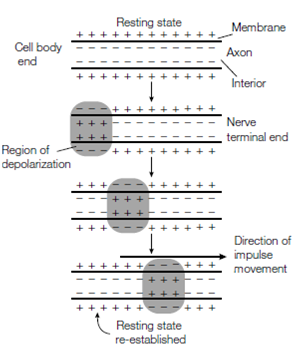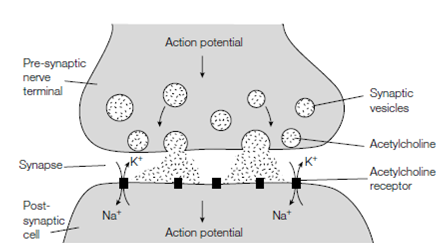Neurotransmitters:
When the action potential reaches the nerve terminal it causes the release of a chemical neurotransmitter by the synaptic vesicles. Mammalian nervous system employs numerous substances as neurotransmitters. These involve the amino acids glycine and glutamate, acetylcholine, the biogenic amines like as dopamine and epinephrine and a variety of little peptides like as the enkephalins. For instance, acetylcholine is stored in synaptic vesicles a specialized form of secretory vesicle and is released into the synaptic cleft through exocytosis in a Ca2+ -dependent manner in figure. the acetylcholine molecules then diffuse across to the plasma membrane of the post-synaptic cell where they bind to specific receptors. An Acetylcholine receptor is 250 kDa complex of four polypeptide chains which forms a gated channel by the membrane.
On binding of two acetylcholine molecules, the channel opens, permitting Na+and K+ ions to flow in and out of the cell, respectively. The resulting depolarization of the post-synaptic membrane initiates a new action potential in that cell. The acetylcholine in the synaptic cleft is rapidly broken down by the enzyme acetylcholinesterase that is the goal of compounds like as diisopropylphosphofluoridate used as a component of some nerve gases.

figure: Propagation of the action potential along an axon

figure: Release of a neurotransmitter into the synaptic cleft.